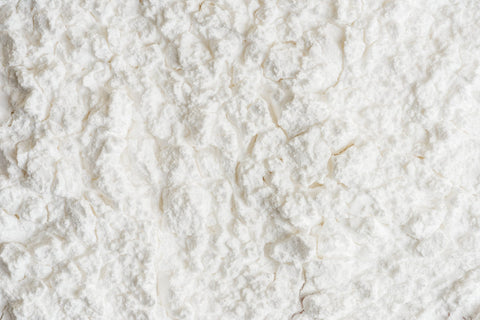Allergy is associated with human immune system which becomes oversensitive and therefore has tendencies to overreact with inflammation and airway constriction to different environmental factors such as pollen, proteins in various foods, bacteria, viruses, moulds, etc.
Symptoms may include runny nose, sneezing, tiredness, itchy eyes, etc.
Possible Causes & Triggers
Nutritional deficiencies (especially lack of antioxidants, vitamin D, C, selenium, zinc and magnesium), deficiency of probiotic bacteria in the gut, gluten sensitivity, consumption of cow’s milk and all dairy products (especially hard cheeses & pizza), diet high in refined sugar, high-fructose corn syrup, refined oils high in omega 6 pro-inflammatory fatty acids, leaky gut syndrome, dust mites, pollen, cigarette smoke, animal fur, bacterial infections (especially Chlamydia pneumonia), diet low in phytonutrients (many of which have anti-inflammatory effects), systemic inflammation, artificial sweeteners, frequent use of medication such as painkillers and antibiotics, stress, anxiety, depression, stimulants, candida albicans overgrowth, sedentary lifestyle (lack of exercise), air pollution, preservatives, hypoxia (oxygen deficiency), free radicals, etc.
- Allergy may be a consequence of vitamin D deficiency and also lack of magnesium, zinc, and selenium as all these nutrients are required for the immune suppressor T-cells to function normally and prevent other immune cells from starting the inflammation and from releasing histamine (and triggering allergic symptoms).
- At the heart of an allergy lies an excessive reaction to a ‘trigger’; something in the person’s environment elicits a strong response in their airways. This trigger causes the smooth muscle surrounding the myriad of delicate airways branching throughout the lungs to constrict. The result is a series of symptoms that people with hay fever know all too well: wheezing, shortness of breath and a tightening of their chest.
- Dust mites, animal fur, pollen, tobacco smoke irritates lungs causing inflammation in the airways. It is not known why the inflammation occurs. The inflammation irritates the airways, and causes them to squeeze (constrict). This causes narrowing of the airways. It is then more difficult for air to get in and out of the lungs. This leads to wheezing and breathlessness. The inflammation also causes the lining of the airways to make extra mucus (phlegm) which causes cough and further obstruction to airflow. One of the principal causes of hay fever is the house dust mite. Less than half a millimetre in size, these minute creatures share occupancy with humans in our soft furnishings (beds, carpets, furniture and so on), eating tiny particles of organic matter – such as our skin. While it’s been known for some time that the mites’ waste contains an allergy-causing protein, it’s only now that the researchers have discovered a way to block this protein’s action. By doing so, they hope to create an entirely new class of anti-allergic drug, targeting the root cause of allergy itself, rather than its symptoms.
- Cow’s milk (A1) may stimulate mucus production associated with respiratory conditions such as allergy. Most dangerous are pasteurised and heated dairy products.
- Egg yolk and egg white proteins may act not only as ingested allergens but also as aeroallergens.
- Formaldehyde may be an irritant as well as serve as an adjuvant for the onset of allergy or hay fever-like symptoms. Artificial sweeteners such as aspartame (NutraSweet) can be converted to formaldehyde in human body.
- Attendance at chlorinated indoor pools has been associated with the risk of allergy in adult recreational swimmers.
- Evidence suggests elevated body mass index and dietary patterns, especially intake of dietary lipids (animal and plant fats), contribute to symptoms of allergy. Scientific research demonstrated that overweight and obesity is a risk factor for allergy as there is a link between inflammatory state and adiposity, allergy and allergy. Obesity has been associated with an increased prevalence of allergy and poorer control of this disease.
Nutrional Supplements & Herbs
- Take supplemental Quercetin as it helps ease allergies by lowering histamine. According to a 2000 report from Alternative Medicine Review, quercetin can slow up the release of histamines (a chemical released by the immune system during exposure to allergens causing allergy symptoms including itching, sneezing, runny nose, and watery eyes). Also, an animal-based study published in 2007 indicates that quercetin can lower histamine and inflammation in allergies. A study with guinea pigs demonstrated that quercetin was able to reduce airway hypersensitivity and relax the bronchial airways (>). Quercetin exhibits the same anti-allergic potential as the Chinese Food Allergy Herbal Formula, which has been shown to block peanut anaphylaxis in mouse models Quercetin and its derivatives have phosphodiesterase inhibitory activity equal to or superior to the drug AWD12-281
- Allergy has been linked to Chronic Bacteria Infections. Antimicrobial therapy (antibiotics) appeared to cure or significantly improve allergy in approximately one-half of treated adults, and the response pattern was consistent with chlamydial pathogenesis. Before using synthetic antibiotics, try natural ones such as garlic, black seed oil, neem oil, etc. Remember to take good quality probiotics such as UltraProbio or DailyProbio for at least three months after each antibiotic treatment.
- Black seed (Nigella sativa) oil contains nigellone, shown by research to be an impressive antihistamine agent, which can be very beneficial in helping reduce symptoms of allergies and hay fever. In a 2011 study published in the American Journal of Otolaryngology, black seed oil was found to reduce allergic symptoms including nasal congestion, itching, runny nose, and sneezing after two weeks. Apart from being beneficial for relieving allergies black seed oil has been traditionally used for centuries for easing respiratory problems including asthma. Nigella sativa helps asthmatic in many different ways, it lowers histamine levels ,kills bacteria that often trigger or contribute to asthma, has anti-inflammatory and immune-modulating properties, and dilates contracted bronchial tubes improving breathing during asthma attack.
- Raw garlic has been found to help people with allergy! Because of the unpleasant smell of the raw garlic take a good garlic supplement (such as Allicin Max) standardised for the presence of allicin (1 capsule 2-3 times a day with meals).
- Bromelain (an enzyme extracted from pineapple) – has an anti-inflammatory effect that may last for a few hours. People suffering from allergy found that putting one tablet (250-500mg) under tongue (to more quickly absorb the enzyme into the bloodstream) would make them breathe easier within 30 minutes.
- Starflower oil or Evening primrose oil (both high in Gamma-linolenic acid) which have a positive anti-inflammatory effect is a known traditional treatment for allergy in some cultures. To experience a beneficial effect a dose of at least 1000mg a day is recommended. According to some research, Gamma-linolenic acid-containing borage oil may have therapeutic effects in the treatment of allergy.
- Vitamin D3: 5000 IU a day with breakfast (must be taken with 200 mg of good quality magnesium twice daily as vitamin D leads to magnesium deficiency and requires magnesium for its conversion). There’s a very strong connection between vitamin D levels and allergy, as vitamin D can be a very powerful immune modulator. A team at King’s College London stated that low levels of vitamin D were linked to a worsening of symptoms of allergy. Its latest research shows the vitamin calms an over-active part of the immune system in allergy.
- Magnesium: 200mg twice daily. Magnesium significantly improves severe acute allergy in children. Magnesium is also absolutely crucial for the final conversion of Vitamin D3 to D4 in kidneys. In people who are deficient in magnesium (most of us are) Vitamin D3 can’t become active and is not able to regulate immunity.
- Omega 3 fish oil (must be of good quality) or cold-pressed Flaxseed oil (highest plant source of Omega-3): 1000 mg twice daily with meals. I can’t emphasize enough the importance of getting sufficient amounts of high-quality omega 3 fats in your diet. You need both animal and plant-based omega 3, as most of us do not produce special enzyme necessary to rapidly convert the ALA (plant omega 3) to the DHA and EPA (animal source), which are potent anti-inflammatory agents. According to one study, Omega-3 fatty acids, vitamin C and zinc significantly improved persistent bronchial allergy. Fish oil compared favourably to montelukast (Singular) in reducing the severity of exercise-induced bronchoconstriction. While fish oil and montelukast are both effective in attenuating airway inflammation and HIB, combining fish oil with montelukast did not confer a greater protective effect than either intervention alone.
- Good quality Probiotics such as UltraProbio or DailyProbio. Results of one study suggested that Lactobacillus reuteri had an immuno-regulatory action in attenuating response in a mouse model of allergic airway inflammation.
- Zinc: 15-30 mg after breakfast. Zinc is used in our body to produce stomach acid. Low stomach acid, therefore, can be a sign of zinc deficiency. That is why when the amount of zinc in our body is insufficient then the protein from food cannot be properly digested in the gastrointestinal tract. As a result, these undigested and too large protein molecules enter the bloodstream where they are recognized by the immune system as potentially dangerous foreign bodies, thus inducing immune reaction and histamine secretion which, in turn, creates allergy symptoms.
- Selenium: 100-200 mcg with a meal. Like Vitamin D3 and Zinc, Selenium is required for the immune suppressor T-cells to function normally and prevent other immune cells from starting the inflammation and from releasing histamine (and triggering allergic symptoms). Selenium deficiency may be important in chronic allergy. Observational studies have demonstrated
- Vitamin C: 500-1500 mg 2-3 times daily with meals. Plasma phospholipase A2, an enzyme associated with inflammation, is higher in patients with allergy and higher body mass index and inversely related to plasma vitamin C levels (vitamin C is low in allergy patients). Secretory phospholipases A2 (sPLA2) have functions relevant to allergic inflammation, including eicosanoid synthesis and effects on dendritic cells and T cells. Plasma sPLA2 may provide a biological link between allergy, inflammation, increased BMI, lipid metabolism and antioxidants. Interactions among these factors may be pertinent to the pathophysiology and increasing prevalence of both allergy and obesity.
- Pycnogenol (Pine bark extract) administration is effective for better control of signs and symptoms of allergic allergy and reduced the need for medication.
- Vitamin B3 and Vitamin B12 have been found to be low in allergy patients. Both vitamins are important as they lower antihistamine levels and reduce wheezing.
- Vitamin B6 – 100-200mg a day with breakfast. Vitamin B-6 has shown to significantly improve symptoms of bronchial allergy and reduced the need for bronchodilators and cortisone that patients with chronic allergy may have lower levels of selenium than their control. Nevertheless, selenium supplementation has not been recommended with drug therapy for allergy.
- Chlorella has been reported by some users to be beneficial in reducing allergy symptoms.
- L-arginine may have a beneficial effect on airway hyper-responsiveness and airway inflammation in allergy.
- Boswellia‘s immunomodulatory properties may make it ideal for the treatment of autoimmune and inflammatory diseases.
- Dongchongxiacao (Cordyceps) can reduce serum markers of airway inflammation.
- Petasites hybridus extract Petadolex is an effective and safe therapy for the treatment of allergy.
- Increased consumption of genistein (organic soy products or soy isoflavones) is associated with better lung function in patients with allergy.
- A combination of Astaxanthin, Ginkgo biloba and Vitamin C is equal to or better than ibuprofen for reducing allergy-associated respiratory inflammation.
- Also Turmeric, Pau d’Arco are often mentioned as helpful in reducing symptoms of allergy.
Dietry & Lifestyle Recomendations
- Every day eat yellow and red onion as it is high in quercetin polyphenols which reduce allergy better than drugs. Yellow onions and most red onions have some quercetin in it. Sweet white onion may not have enough.
- Eat more unprocessed, uncooked, and unrefined plant foods, especially raw vegetables (carrot, green leafy, etc.)
- Avoid trans-fats (margarines, etc.) and pro-inflammatory omega 6 fatty acids (most plant oils).
- Use only raw organic coconut oil and cold-pressed flax oil & virgin olive oil.
- Do not consume even smallest amount of dairy (especially hard cheeses and pizza), meat (especially pork), gluten, foods and drinks with sugar, white flour products, hot spices, stimulants, chocolate, cola, fried foods, processed foods.
- Instead of gluten-containing grains try other grains such as quinoa, millet, brown rice and buckwheat.
- According to one study, breathing exercises have a therapeutic role in the treatment of allergy.
- Exercise every day breathing through the nose (especially out in fresh air if you have allergy) is actually crucial as it increases insulin receptor sensitivity, and as a result your body produces less insulin, which helps to reduce inflammations and symptoms of allergy.
- Think positive, learn to control stress & anxiety. Children with allergy receive benefit from art therapy that includes decreased anxiety and increased quality of life.
- Expose your body to the sun whenever it is possible.
- Avoid taking antibiotics for a longer period of time and if you use them always take high doses of a good probiotic formula.
- Drink more water, avoid all caffeine, and include some sea salt in your diet has worked for some people. All caffeinated beverages — even green tea — are dehydrating (chronic dehydration is linked to bronchoconstriction).
SOURCES
- 253 Abstracts with Allergies Research
- https://www.greenmedinfo.com/disease/allergies
RELATED ARTICLES
Any information or product suggested on this website is not intended to diagnose, treat, cure or prevent any medical condition. Never disregard medical advice or delay in seeking it because of something you have read on this website. Consult your primary healthcare physician before using any supplements or making any changes to your regime.




